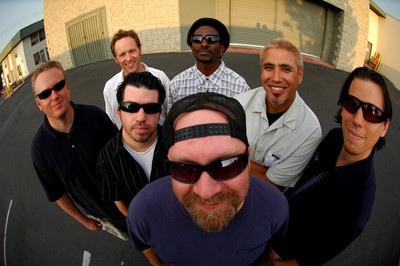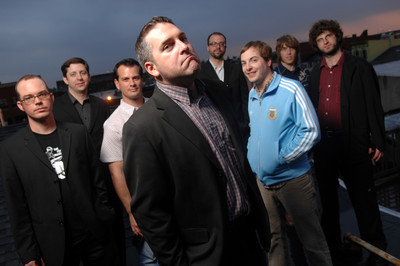Circus Acts


What’s in a name?
When the name is the International Ska Circus, a world of music spanning not only the globe but the generations.
Saturday marks the all-day festival’s second Las Vegas visit — the first took place in February 2006.
On that day, “we needed a heated tent” to ward off the backstage chill, recalls Stephen Jackson of the Pietasters, one of the groups returning for this year’s circus — which should offer considerably warmer weather for bands and fans alike.
But at least “the set times are short,” Jackson points out. “Hopefully we’ll get a set time after the sun goes down.”
With a dozen bands performing, however, somebody’s got to play in the Vegas heat — which also gives them the chance to heat up the stage while the temperature’s hovering near triple digits.
Saturday’s lineup ranges from such veteran ska revivalists as the English Beat, the Slackers and the Toasters — fronted by British expatriate Rob “Bucket” Hingley, the event’s organizer — to Las Vegas’ own One Pin Short.
Joining the Pietasters in the ’90s contingent: Mustard Plug and Buck-O-Nine. The Hub City Stompers and Westbound Train represent the East Coast. And, from Mexico City’s ska branch: Sektacore.
“It’s such a funny little subgenre of music, we need strength in numbers,” says Jackson, whose Pietasters will blend old favorites (“we can’t get away from the old stuff or they would throw tomatoes at us”) with selections from “All Day,” the band’s first album of new tracks in five years.
The International Ska Circus was inspired by “a number of formats, not the least of which was the international ska festival that used to go off annually back in the ’80s,” Bucket writes in an e-mail from somewhere in Spain without telephone service.
“Since that time, nothing has really been instituted in the States, so this is our response to that,” he notes.
The circus also has a European branch; “the next manifestation is Dec. 5 in Prague,” Bucket adds.
Although “this is only our second drop in Las Vegas in successive years, we have had the privilege of working with many of these acts over a period going back years,” he e-mails. “Fans will recognize some household names from 2-Tone and third-wave ska and it’s going to be a good time to get together with some of our old friends.”
That mix of old and new reflects ska’s ongoing appeal, Jackson explains.
In the beginning was Jamaican ska, which originated in the 1960s, after the Caribbean island nation gained its independence from Britain in 1962.
Initially, ska musicians combined Jamaican music “with what they heard from New Orleans,” Jackson says. “It goes back to R&B” — rhythm and blues.
Bucket bought his first ska record (Millie Small’s “My Boy Lollipop”) in 1964 and has “been into the groove ever since,” he writes. “There has been a quantum jump in styles between those early rhythms and today’s pumped-up power punk interpretations.”
Jackson, by contrast, came to ska in the late ’80s as a Washington, D.C., high school student influenced by the local punk scene — and “British bands (that) were reviving this music that originated in Jamaica” by adding “a punk influence.”
By the mid-’90s, “kids were emulating the bands and interpreting the music,” Jackson comments, adding “a heavier edge.”
The Pietasters’ own spin on ska includes “old soul and old reggae covers,” he adds, although “we try and make it original sounding.”
Through the years, the Pietasters have played with everyone from punk legend Joe Strummer to funk legend James Brown.
Such eclectic influences help to explain why “three and four different generations” have embraced ska in all its permutations, Jackson comments.
After all, as Bucket puts it, “a genre that sits on a nexus of ska/reggae/jazz/soul/funk/punk/rock” has enough variety to “appeal transgenerationally to a host of fans, regardless of their backgrounds.”
what: International Ska Circuswhen: Noon-11 p.m. Saturday (doors open 11 a.m.)
where: Clark County Government Center Amphitheatre, 500 S. Grand Central Parkway
tickets: $20-$25; ticketmaster.com or internationalskacircus.com












